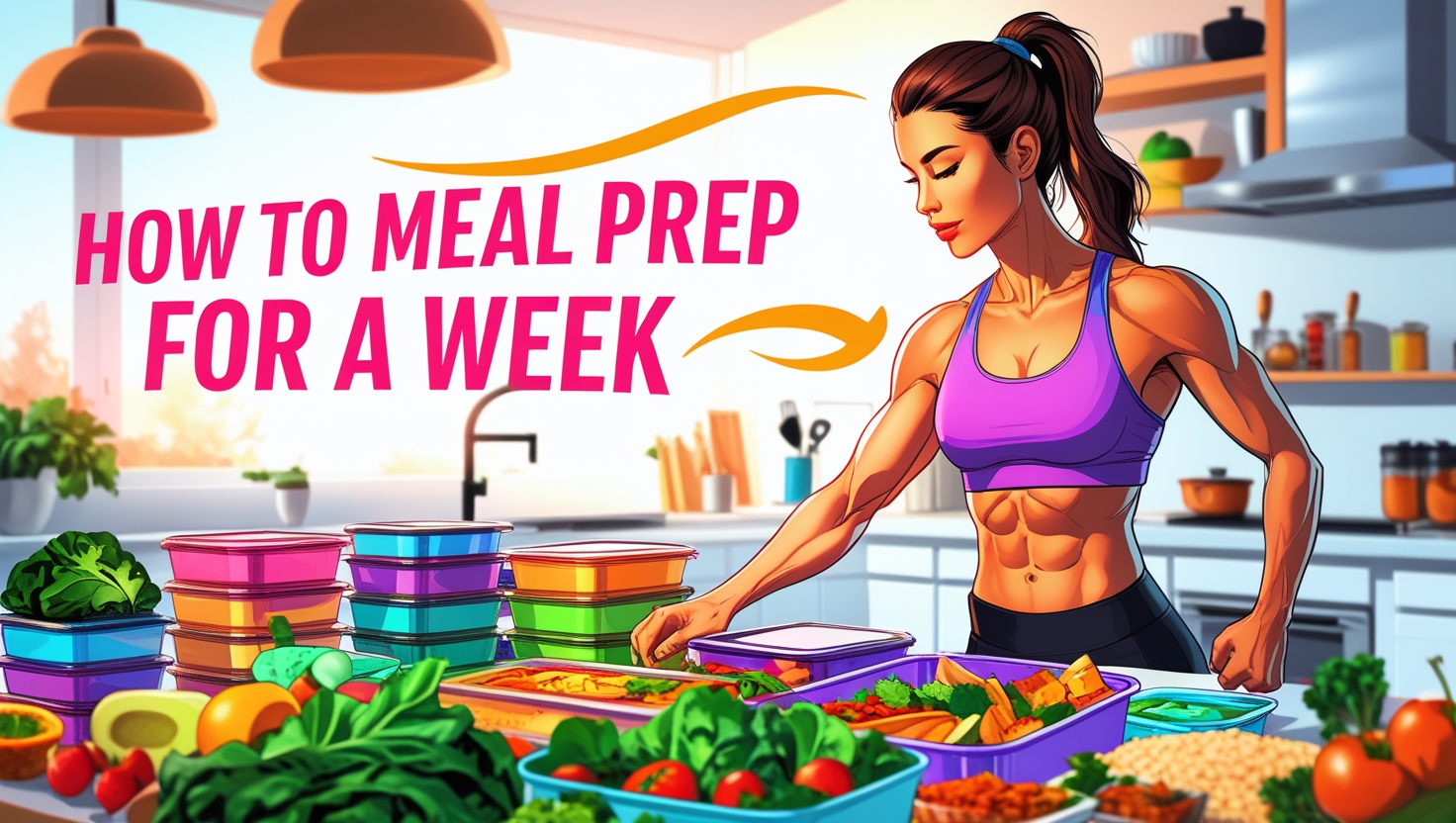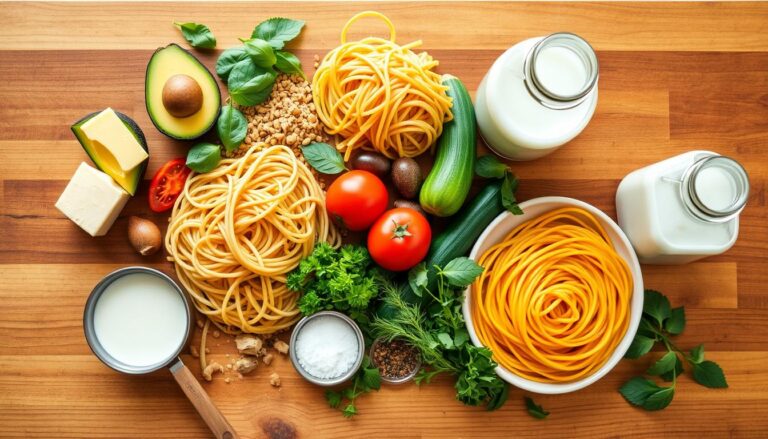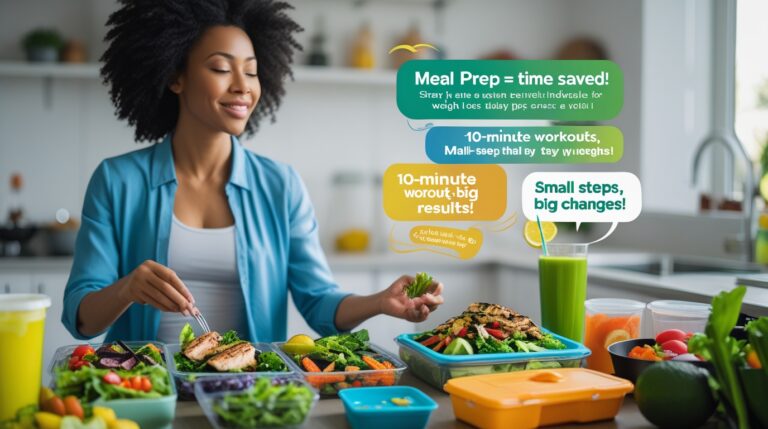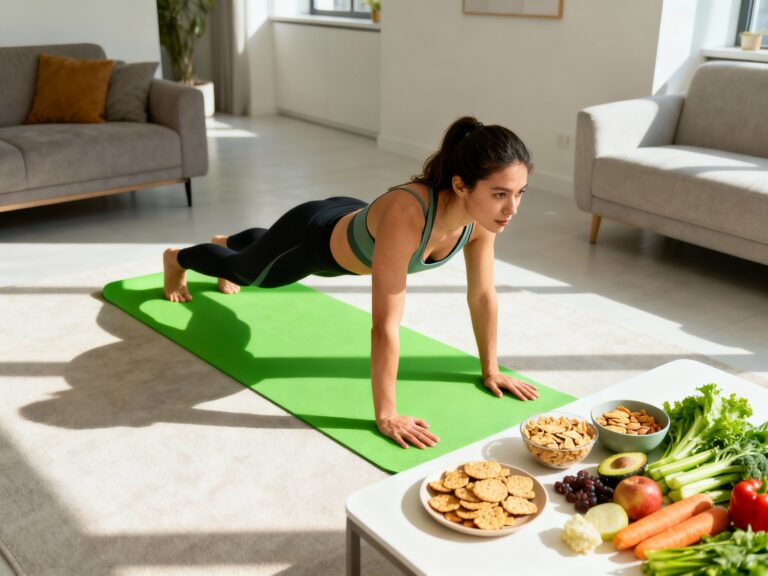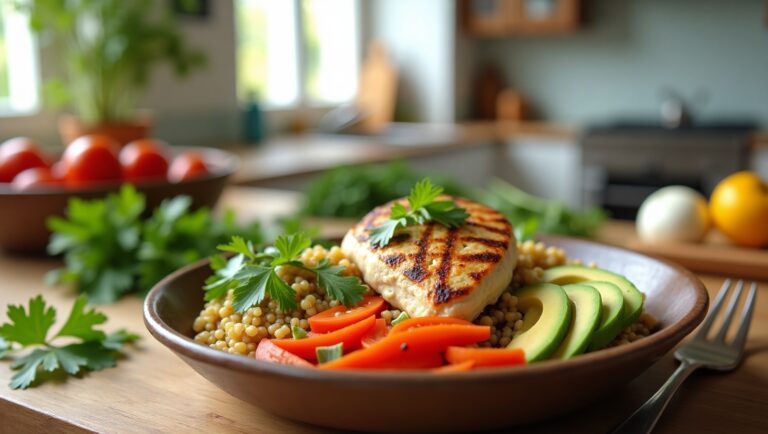Complete Guide: How to Meal Prep for a Week of Clean Eating
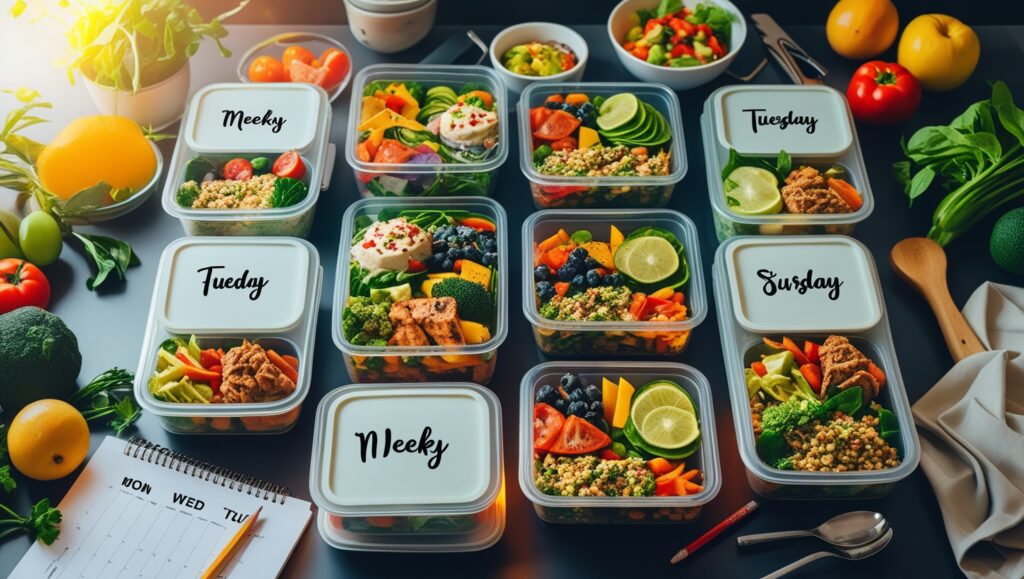
In today’s world, eating healthy can be tough. Work, family, and social life make it hard to cook every day. Meal prepping is a solution. It means preparing meals ahead of time for a week.
This guide will show you how to meal prep for a week of clean eating. We’ll cover planning, shopping, cooking, and storing your meals.
What is Clean Eating?
Clean eating means eating whole, unprocessed foods. It’s about eating foods in their natural state, without additives or artificial ingredients. This approach focuses on:
- Whole Grains: Brown rice, quinoa, oats, and whole wheat.
- Lean Proteins: Chicken, turkey, fish, tofu, and legumes.
- Healthy Fats: Avocados, nuts, seeds, and olive oil.
- Fruits and Vegetables: A variety of colorful produce.
- Minimally Processed Foods: Avoiding packaged and processed foods.
Following a clean eating diet can improve your health, boost energy, and help maintain a healthy weight.
Benefits of Meal Prepping for Clean Eating
Meal prepping has many benefits, even more so when you eat clean:
- Saves Time: Preparing meals in advance saves time for other activities.
- Promotes Healthy Eating: Having healthy meals ready makes it easier to avoid unhealthy choices.
- Reduces Food Waste: Meal prepping helps use up ingredients before they spoil, reducing waste.
- Saves Money: Buying ingredients in bulk and cooking at home is cheaper than eating out or buying pre-packaged meals.
- Encourages Portion Control: Pre-portioning meals helps avoid overeating and maintain a balanced diet.
Step 1: Plan Your Meals
The first step in meal prepping is planning your meals for the week. Decide what you’ll eat for breakfast, lunch, dinner, and snacks. Here’s how to start:
1.1 Set Your Goals
Before planning, think about your dietary goals. Are you trying to lose weight, build muscle, or just eat healthy? Your goals will guide your meal choices.
1.2 Choose Your Recipes
Choose recipes that fit your clean eating goals. Look for dishes with whole grains, lean proteins, healthy fats, and lots of fruits and vegetables. Consider:
- Breakfast: Overnight oats, smoothie bowls, or egg muffins.
- Lunch: Grain bowls, salads, or wraps.
- Dinner: Grilled chicken with roasted vegetables, quinoa stir-fry, or baked fish with sweet potatoes.
- Snacks: Fresh fruit, nuts, yogurt, or veggie sticks with hummus.
1.3 Create a Meal Plan
After picking your recipes, make a meal plan for the week. Write down what you’ll eat for each meal and snack. This keeps you organized and ensures you have all the ingredients.
1.4 Make a Shopping List
Based on your meal plan, make a detailed shopping list. Include all ingredients you’ll need for the week, plus any pantry staples you’re low on. Organize your list by category (e.g., produce, dairy, grains) to shop more efficiently.
Step 2: Shop for Ingredients
With your shopping list in hand, it’s time to hit the grocery store. Here are some tips for shopping for clean eating:
2.1 Stick to the Perimeter
The perimeter of the grocery store is where you’ll find fresh produce, meats, dairy, and other whole foods. Try to focus your shopping on these areas and avoid the inner aisles, which are often filled with processed foods.
2.2 Read Labels
When buying packaged foods, read the ingredient labels carefully. Look for products with minimal ingredients and avoid those with added sugars, artificial flavors, and preservatives.
2.3 Buy in Bulk
Purchasing items like grains, nuts, and seeds in bulk can save you money and reduce packaging waste. Just be sure to store them properly to maintain freshness.
2.4 Choose Seasonal Produce
Seasonal fruits and vegetables are often fresher, tastier, and more affordable. Visit your local farmers’ market or check the seasonal produce section at your grocery store.
Step 3: Prepare Your Kitchen
Before you start cooking, make sure your kitchen is ready for meal prepping. Here’s how to set up your space:
3.1 Clean and Organize
Clear off your countertops and clean your kitchen to create a fresh, organized workspace. Make sure your sink is empty and your dishwasher is ready to go.
3.2 Gather Your Tools
Having the right tools on hand will make meal prepping easier and more efficient. Some essential tools include:
- Chef’s Knife: For chopping vegetables and meats.
- Cutting Board: A large, sturdy cutting board is a must.
- Mixing Bowls: For mixing ingredients and marinating proteins.
- Measuring Cups and Spoons: For accurate portioning.
- Baking Sheets and Pans: For roasting vegetables and baking proteins.
- Food Storage Containers: Invest in a set of high-quality, airtight containers for storing your prepped meals.
3.3 Set Up Your Workstation
Arrange your tools and ingredients in a way that makes sense for your workflow. For example, keep your cutting board, knife, and mixing bowls within easy reach. Set up a designated area for prepped ingredients and another for finished meals.
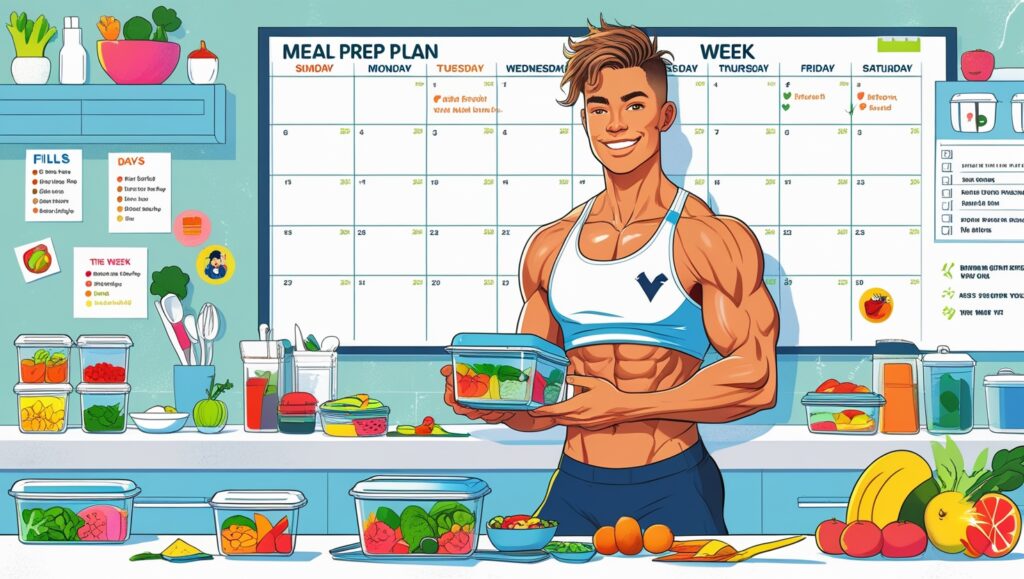
Step 4: Cook and Assemble Your Meals
Now that your kitchen is ready, it’s time to start cooking. Here’s how to efficiently prepare your meals for the week:
4.1 Start with the Basics
Begin by cooking the foundational components of your meals, such as grains, proteins, and roasted vegetables. These can be used in multiple dishes throughout the week.
- Grains: Cook a large batch of quinoa, brown rice, or whole wheat pasta.
- Proteins: Grill or bake chicken, fish, tofu, or legumes.
- Vegetables: Roast a variety of vegetables, such as broccoli, sweet potatoes, and bell peppers.
4.2 Prepare Individual Components
Once your basics are ready, move on to preparing individual meal components. This might include:
- Chopping Vegetables: Dice onions, slice cucumbers, or shred carrots for salads and wraps.
- Cooking Sauces and Dressings: Prepare homemade sauces, such as pesto or tahini dressing, to add flavor to your meals.
- Hard-Boiling Eggs: A great protein-packed snack or addition to salads.
4.3 Assemble Your Meals
Now that you have all your parts ready, it’s time to put your meals together. Here’s how:
- Portion Control: Use measuring cups or a kitchen scale to portion out your meals. This ensures you’re eating the right amount of each food group.
- Layering: For salads and grain bowls, start with a base of greens or grains, then add your proteins, vegetables, and toppings.
- Packaging: Transfer your meals into airtight containers. Label them with the date and contents to keep track of freshness.
4.4 Store Your Meals
Proper storage is key to keeping your meals fresh throughout the week. Here are some tips:
- Refrigeration: Store meals that will be eaten within 3-4 days in the refrigerator. Keep them on the middle or top shelf, where the temperature is most consistent.
- Freezing: For meals that won’t be eaten within a few days, consider freezing them. Use freezer-safe containers and leave some space for expansion.
- Reheating: When ready to eat, reheat your meals in the microwave or oven. For best results, add a splash of water or broth to prevent drying out.

Step 5: Stay Consistent and Flexible
Meal prepping is a habit that takes time to develop. Here are some tips to stay consistent and make the process easier:
5.1 Set a Routine
Choose a specific day and time each week for meal prepping. This could be Sunday afternoon or any other day that works best for your schedule. Consistency is key to making meal prepping a regular part of your routine.
5.2 Keep It Simple
You don’t need to prepare elaborate meals every week. Start with simple recipes and gradually experiment with more complex dishes as you become more comfortable with the process.
5.3 Be Flexible
Life can be unpredictable, and there may be weeks when you can’t stick to your meal plan. That’s okay! Be flexible and adjust your plan as needed. If you’re short on time, consider prepping just a few meals or using store-bought shortcuts, like pre-washed greens or rotisserie chicken.
5.4 Track Your Progress
Keep a journal or use a meal planning app to track your meals, recipes, and shopping lists. This will help you stay organized and make it easier to plan future weeks.
Step 6: Enjoy the Benefits of Clean Eating
By following this guide, you’ll be well on your way to a week of clean eating through meal prepping. Here are some final tips to help you enjoy the benefits:
6.1 Listen to Your Body
Pay attention to how your body responds to clean eating. You may notice increased energy, better digestion, and improved overall health. Adjust your meals as needed to meet your body’s needs.
6.2 Stay Hydrated
Drinking plenty of water is an essential part of a healthy diet. Keep a water bottle with you throughout the day and aim to drink at least 8 glasses of water daily.
6.3 Practice Mindful Eating
Take the time to savor your meals and eat mindfully. This means eating slowly, chewing thoroughly, and paying attention to your hunger and fullness cues.
6.4 Celebrate Your Successes
Meal prepping and clean eating are achievements worth celebrating. Acknowledge your progress and reward yourself for sticking to your goals. Whether it’s treating yourself to a new kitchen gadget or enjoying a relaxing evening, find ways to celebrate your hard work.
Meal prepping for a week is a great way to keep a healthy lifestyle. It helps you plan meals, buy good ingredients, and cook ahead. This saves time, lowers stress, and lets you eat healthy all week.
Stay on track, be open to changes, and listen to your body. With effort and practice, meal prepping will become easy. It will help you reach your health and wellness goals.

